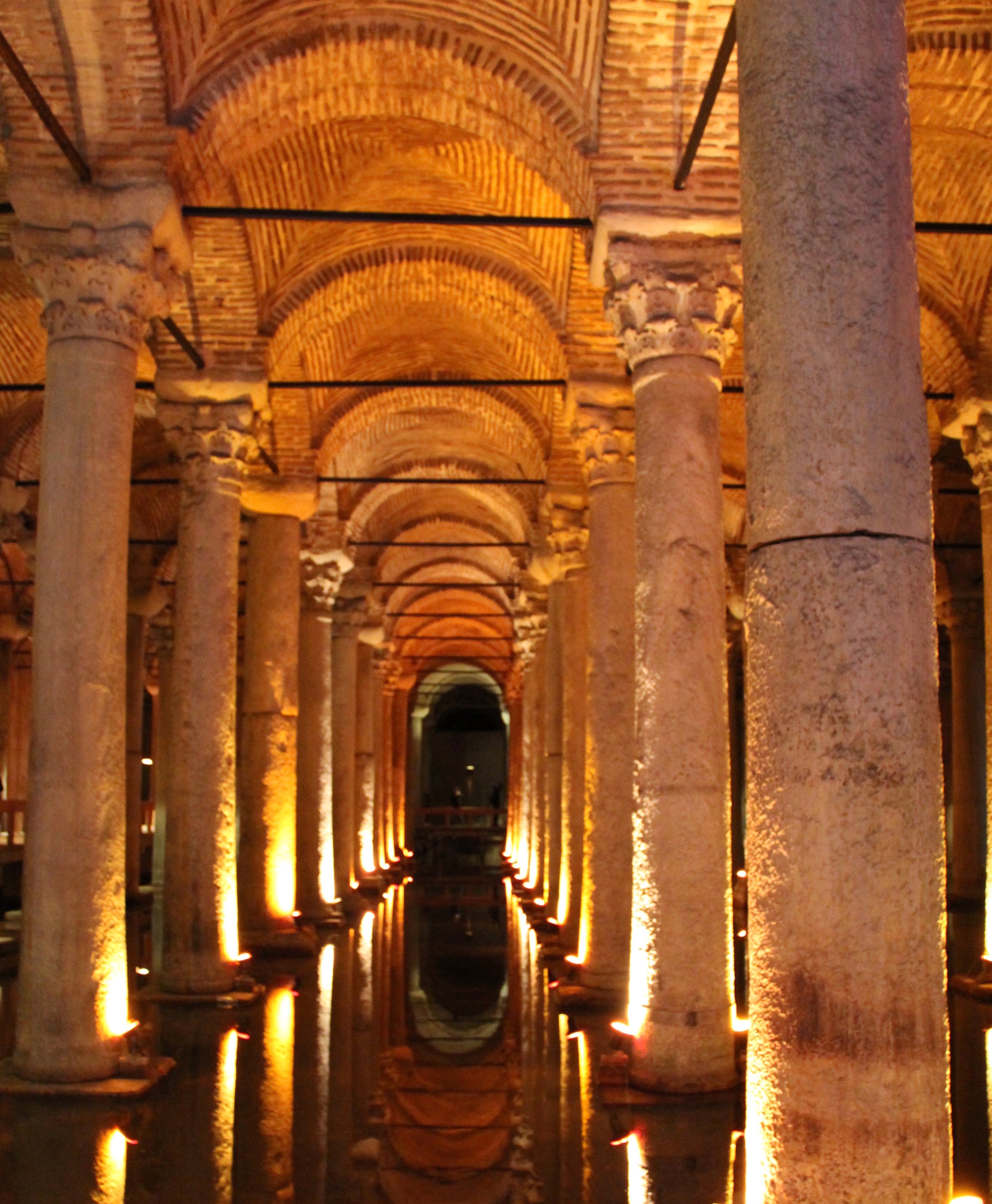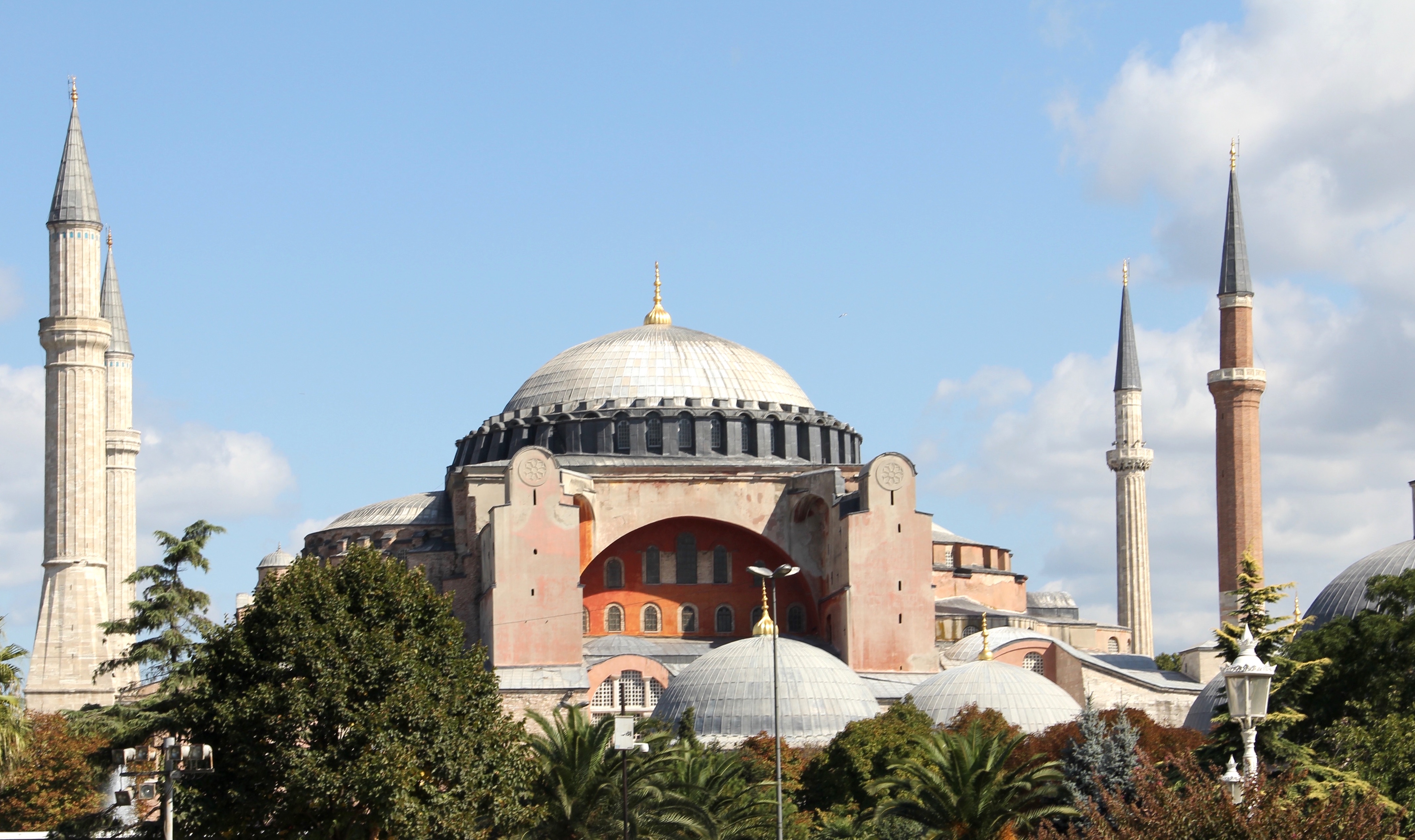
Blue Mosque
There is a trivia question that goes like this … what is the name of the city that is located on two different is a trivia question that goes like this …
what is the name of the city that is located on two different continents? The answer is Istanbul, Turkey.
The Bosphorus River splits Istanbul, with the Western side in Europe and the Eastern side in Asia.
To the west is the Mediterranean Sea; to the east is the Black Sea and members of the former Soviet Union. On the southeastern side are the Middle Eastern countries of Syria, Iraq, and Iran.
Why is the geography important? Because it provides a clue as to its diversity since being founded over 2,500 years ago.
Istanbul has also gone by the name of Byzantium and Constantinople, and it has been at the center of four major empires throughout history: Roman, Byzantine, Latin, and Ottoman—all before the independence of the Republic of Turkey in 1924.
Strolling through the city, it is easy to see similarities with many European cities that are caught in a balancing act between current and past. The city’s skyline is a combination of modern skyscrapers and thousand–year–old buildings.
Today, the metropolitan city of Istanbul has roughly 15 million residents. While Istanbul has experienced violence in recent history, I found the city to be as safe as most around the world.
As usual, visitors should be aware of their surroundings and be cautious while in crowds. One building that showcases Istanbul’s diversity is the Hagia Sofia.
Completed in 537 A.D. as a cathedral, it stood as the world’s largest for almost a thousand years. In 1453, the Ottoman Empire seized Constantinople, and the church was converted into a mosque.
Catholic/Christian images were destroyed or covered with symbols of Islam. After the fall of the Ottoman Empire in 1924, the mosque was closed, renovated, and reopened as a museum.
While renovating, they discovered many of the covered Christian images. But the effort proved challenging as how to remove the Islamic artwork without causing it damage, nor damaging the historic Christian art.

Basilica Cisterna
Both are of significance and valued by their respective religions.
Luckily they have been able to keep and restore both, and to today, the renovations are ongoing and both religions are represented inside.
Another world-famous mosque is formally named the Sultan Ahmed Mosque, but better known as the Blue Mosque, nicknamed for the hand-painted blue tiles on the walls. The interior is stunning with the tiles, tall ceilings, wall-to-wall red carpet, and a giant chandelier that is retrofitted for modern electricity.
One unique element is the six minarets (towers) outside. Our tour guide explained that they were constructed due to a miscommunication. Sultan Ahmed ordered his architect to build “altin” minarets, which means golden, but the architect thought he said “alti,” which means the number six. In any case, the picturesque mosque is an icon of the city.
Near the mosques is Topkapi Palace, built in 1478 as the royal residence for the Sultan. The palace grounds are enormous at over 700,000 square meters and were built as a city within a city, with its own housing, mosque, art galleries, courtyards, and even treasury. After the fall of the Ottoman Empire, the palace was turned into a museum.
The complex consists of over a thousand rooms, but only the most important are open to the public and are used to showcase religious relics (including a tooth, cloak, swords, hair, and a signed letter from the Prophet Muhammad), Ottoman clothing, military weapons, and other artifacts.
Topkapi Palace was designated a UNESCO World Heritage Site in 1985. Walking through the grounds, a visitor can get a feel as to how the royal Sultans lived during a time in which they were among the most powerful in the world.

Hagia Sophia
Visiting Istanbul would not be complete without visiting its Grand Bazaar. Construction started in 1455, and today, the bazaar employs 26,000 people and attracts 250,000-400,000 visitors a day. In 2014, it was named the #1 most visited tourist attraction in the world by Travel and Leisure, with over 91 million visitors.
Inside, visitors can find everything imaginable including traditional apple tea, baklava, and Turkish carpets. There are over 4,000 shops in the 47,000–square meter bazaar.
It is winding and maze-like, and part of the fun is getting lost and finding the way out. Last was the Basilica Cisterna, an ancient cistern (water storage) that lies beneath the city. At almost 10,000 square meters, it is an eerie feeling walking below the streets of Istanbul in the massive dark, damp room.
The cistern is almost 1,700 years old and was built to provide filtered water to the palace during the Byzantine Empire. While it has had its part in olden history, it has also been included in several Hollywood movies from the 1963 James Bond film “From Russia with Love” up to the 2016 movie “Inferno,” starring Tom Hanks.
I was encouraged by Istanbul, walking from churches and mosques, seeing Muslims and Christians living in harmony. One guide acknowledged the recent violence puts a dark cloud over the city, but the real shame is that its own residents do not carry out the violence; rather by outsiders coming to destroy peace.
We have our own struggles in the Philippines when it comes to religious differences and it brings about hope to see a city such as Istanbul embracing its diversity where all religions can live side by side. Even with a week, a visitor would feel like they are just scraping the surface.
This is just a list of a few of the places I got to see; there is much more to be found in this 2,500-year-old city.
There is the hippodrome, the sporting and social center of Constantinople, to the spice souks to a cruise down the Bosphorus River to museums and everything in between, there is so much more to see and do. But all vacations must come to an end, and it only leaves me with inspiration to one day return.

